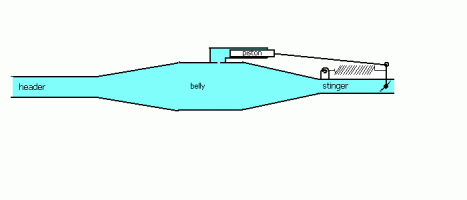jaguar
~SPONSOR~
Here is a drawing of the system I put on my pipe for my 55cc bicycle engine. I hope it will broaden the powerband by increasing pipe back pressure at mid range (for less loss of intake charge out the exhaust port) and lessen the pressure at top rpm (to keep it from decreasing the diffuser return wave thats needed to increase intake at top rpm). The complete writeup on this experiment is at dragonfly75.com/motorbike/stingersizing.html
Attachments
Last edited:
